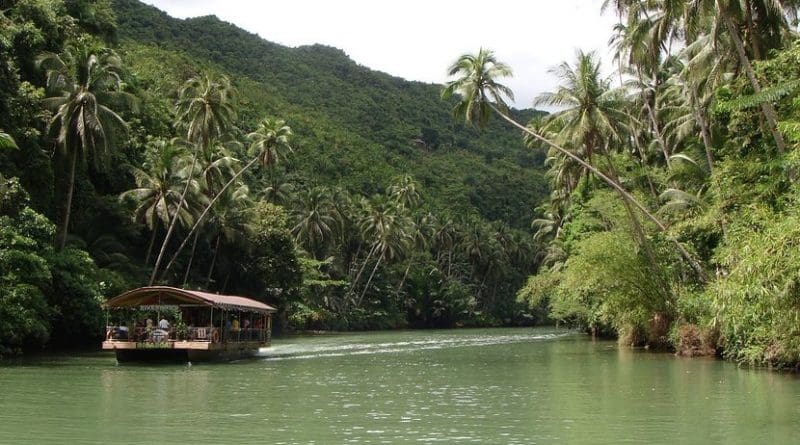Philippine Traditional Environmental Management Practices Of The Kalingas, Apayaos And Bontocs Save Forests – OpEd
The indigenous peoples (IPs) worldwide, are the real guardians of the forests. They know pretty well each tree species, its uses, characteristics, and propagation. They know whether a fruit or a flower is edible or not. Knowing the use of each tree prevents them from indiscriminate cutting, and gives them the knowledge when a certain tree is old enough to be harvested. For the IPs, the forest is their playground, recreation area, and training ground for forest survival.
In the Philippines, the Bontoc, Kalinga and Apayao IPs have their own traditional practices in conserving and protecting natural resources. Their concept of conservation is integrated with their indigenous knowledge, systems, and practices. There are many distinct ways in their daily lives that indicate their traditional practices of conserving the environment especially the forest.
ESTABLISHMENT OF OWNERSHIP OF PROPERTY
Imong System
There are well-defined property boundaries among the IPs. In their Imong System, the boundaries are marked by planting trees like palm trees or placing big stones or using natural boundaries such as creeks, mountain ranges, mountain saddles and rivers. This system of indigenous ownership starts with small clearings called baang. Iniatially the place is planted with vegetables and tree seedlings. After the vegetables have been harvested and when the trees mature, the area will be owned by the vegetable-cultivator. Ba-ang is one of the indigenous ways of owning a particular area not previously owned by another.
FOREST CONSERVATION PRACTICES
Among the IPs, gathering of firewood or any forest product from the imong is strictly prohibited unless with the acquiescence of the owner. It is a taboo to them to enter it without proper permission. Even upland farming with kaingin activities is strictly prohibited. The forest trees in the imong are reserved for building houses of light materials and firewood. The trees are not even cut down; only their branches are pruned for firewood. Stealing in the imong area is severely punishable by the village folks. The perpetrator of the crime can be identified by the sapata (swearing). All suspects will undergo the sapata by swearing that one’s eyes will be blinded like a coin or his stomach will become as large as a big jar if he is the culprit.
Lapat
This is an interdiction of the cutting of wood or grazing of a particular area in honor of the dead. The interdiction will take a year. When an area is declared as lapat every one is prohibited to enter in that area. Gathering of fruits and fire-woods are strictly prohibited and violation is severely penalized by the village folks. This is practiced in Apayao of the Cordillera Region in the Northern Philippines. Lapat is also practiced in the house. A particular part of the house can be declared as lapat.
Apa system of Mountain Province
This system is similar with the imong but the apa system entails a wider area. It may cover a whole mountain, hills or wide plains. Variety of farm products can be planted in it. It can be used as grazing land, kaingin area, vegetable production or even an area for planting of fruit bearing trees. Like the imong, entry in the apa is prohibited unless with the expressed permission from the owner.
Lakun System
The lakun system refers to selected parts of the forest that are cleared for special purposes like planting of fruit bearing trees which is likened to an orchard. A part of it is reserved for growing cogon grasses which are used as roofing materials for houses. Other areas are planted with bamboos of different varieties. The bamboos are very important because they have countless purposes. They can be used for fencing, walling, flooring, as materials for house construction. Dried bamboos are also used in cooking, as storage of rice, beans, water, and others. Vegetables like legumes and root crops are also planted in the lakun. It is usually enclosed with a fence.
Tadaw
This is a practice of the IPs where bigger trees in the kaingin area are not cut instead they are pruned. This is so to make trees pliant and resilient to stand against strong winds of typhoons. After the harvest time or typhoon season the tree can easily rejuvenate or fallow.
Kalinkin
This is a practice among kaingineros (those practicing kaingin) that before clearing a forest for kaingin, all of them help one another to make a fire wall around the kaingin area. The clearing wall is about two meters surrounding the whole kaingin area. This will prevent the fire from going wild which may spread and create forest fire.
Selective kaingin
The community folks do not introduce kaingin anywhere in the forested area. There are identified areas good for kaingin. These areas are proven to be fertile, with less undergrowth, vines, and not stony. The folks only cultivate the soil twice, the inagguma and gangan. The inagguma is the first kaingin done in a certain area. After the harvest in the first clearing is done and the soil is still fertile, the farmers will cultivate the same area for the second time, the gangan. After the second cultivation, the area is left to fallow (bol-as) for five or more years.
FOREST MANAGEMENT SYSTEM
Indigenous Farming Calendar Indigenous Peoples of Kalinga and Ifugao in the Cordillera have similar farming activities in the same months spread throughout the whole year. These indigenous farming activities are reflected in . Each month of the year is slated for a particular farming activity. The distribution of the farming related activities has become a natural conservation practice. The folks do not go for hunting when it is not the appropriate season for it. Other activities such as kaingin, ba-ang, gathering fruits, and others have also their specific seasons.

